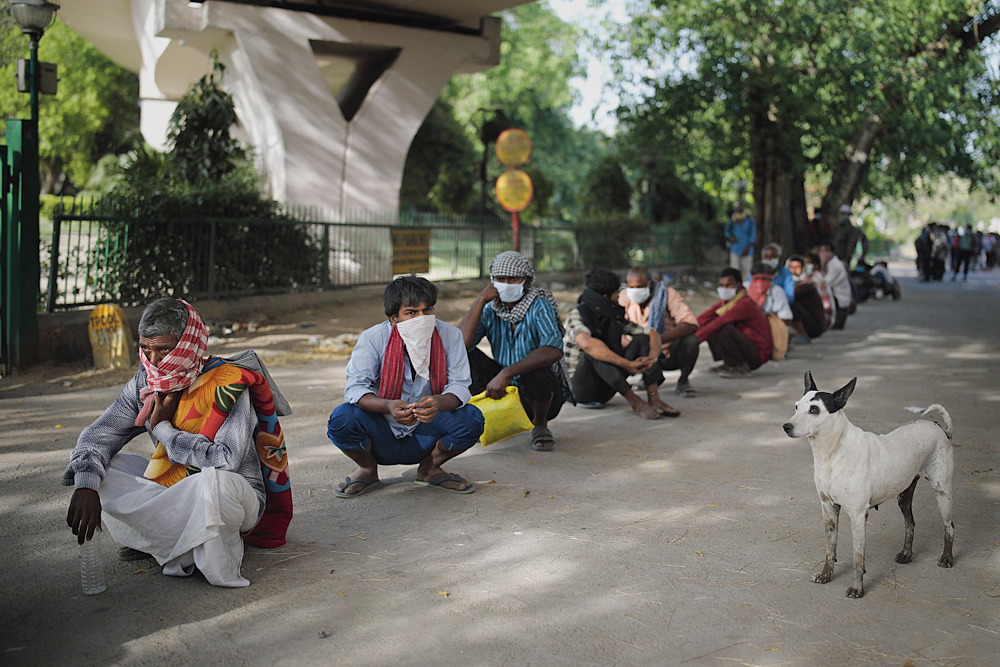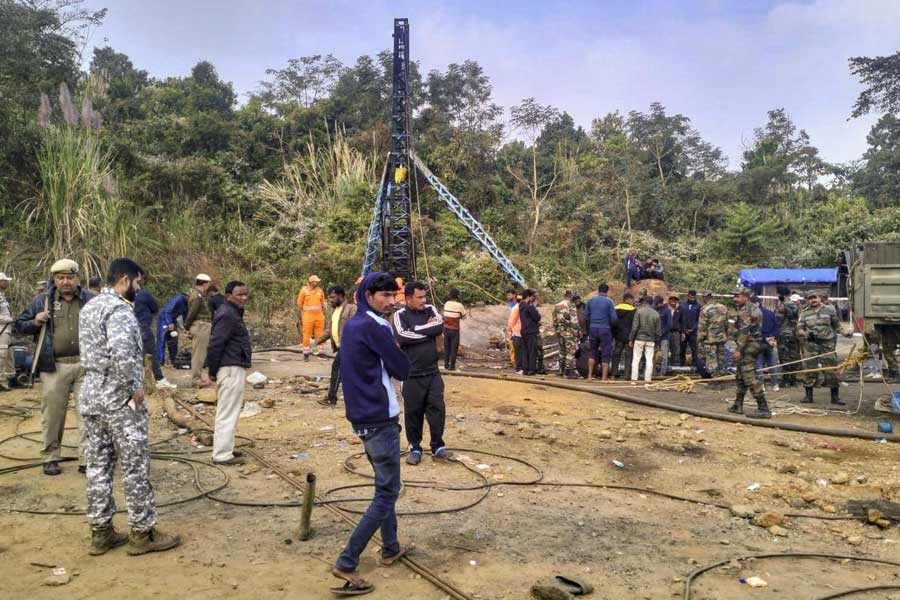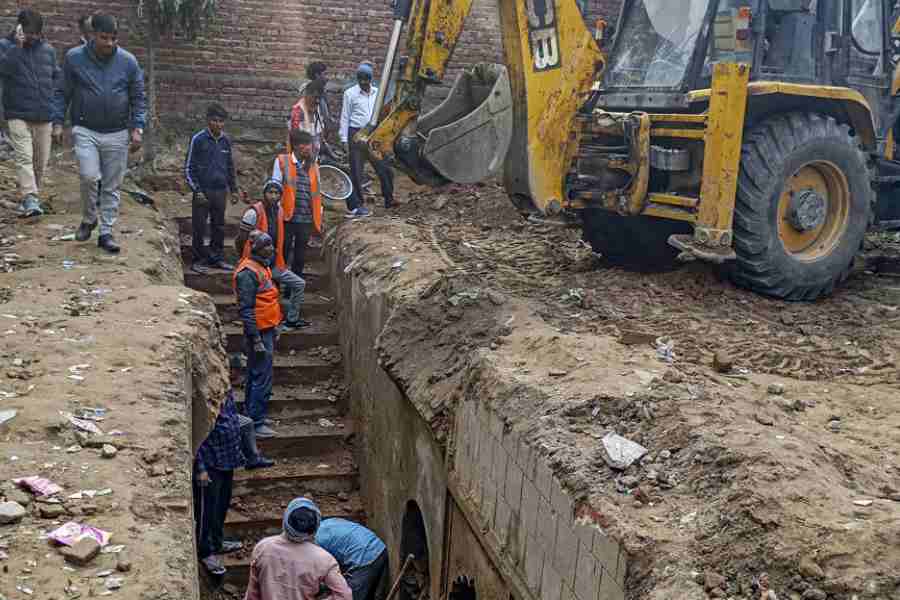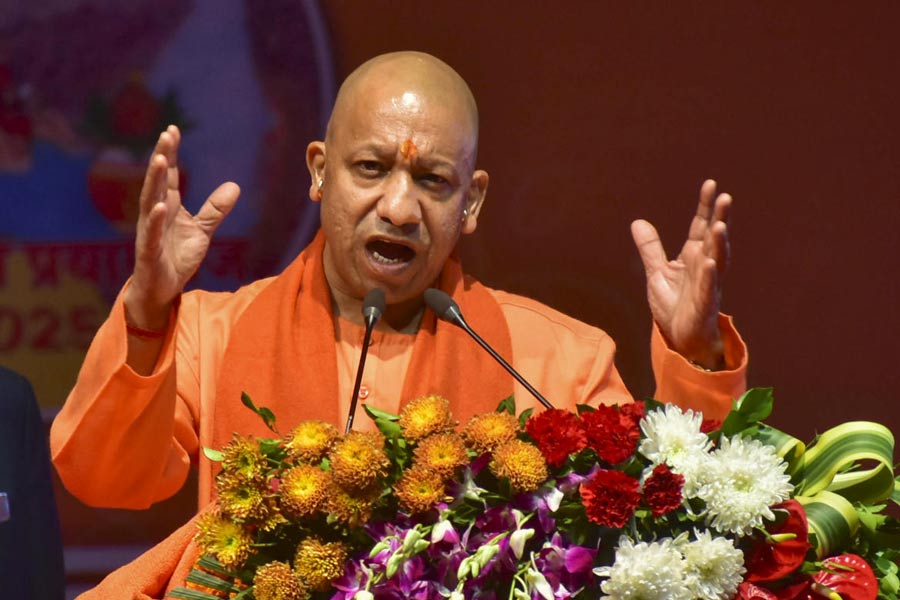Anthropologists have been fascinated by disasters. They psychoanalyse them to reveal what a society thinks in a time of crisis. For them, disasters reveal not only the codes of conduct but also the modes of thought in an extraordinary moment. Language is critical here. In fact, a colleague of mine told me, “The virus should’ve been named the chronovirus rather than the coronavirus. It’s actually an epic study of the unravelling of the varieties of time in modern society.” He added sadly, “The glossaries of time have become impoverished in modern society.” We need a glossary, a cornucopia of at least two thousand words, concepts and metaphors to describe the nuances of time in our society.
Modern India, he claimed, has several kinds of time. An agricultural society has seasons, a nomadic society has festivals and gatherings after long periods of isolation, a modern society is replete with timetables. Timetables regulate corporations, schools and the grammar of governance. When Narendra Modi declared the lockdown, he recognized the middle class India where the lockdown was a freezing of timetables, a closure of time, or everyday middle class life. His policy advises experts that time is money, and that time is life-giving, and his policy was seen as ‘buying time’ for India. Modi’s motive of time was narrow. He began his speech to the nation at 08:00 pm, and declared the lockdown by midnight. He almost disclosed no sense of the multiplicity of time in Indian society. Modi employed time as a disciplinary category, treating the lockdown as a freezing of time in society. His middle class insular time was oblivious of the plural times of the informal economy.
Modi devastated the informal economy by shutting down timetables. Jobs were frozen and the daily workers were helpless, caught in the rituals of waiting. The migrant economy was devastated as the migrant crossed this temporary certainty and became dubious and suspect. They found that the temporariness of citizenship had become even more fragile than before. An informal economy as a fragile web of time and temporariness was shattered. The most common ritual of time was the act of waiting. It had no timetable and it already seemed endless. Whether it’s war, insurgency or disasters, waiting as a ritual, waiting for normalcy, has become the art of the vulnerable. Temporariness becomes a way of life, and hope, as a slum wife told me, becomes hubris. The phenomenology of waiting, its impact on the self, the sense of body time, its freezing of autobiography need a language, a vocabulary we do not possess. Classifying all these under uncertainty says little. One builds slivers of hope as narratives of expectation to hang on to but these collapse almost every day. There’s an emptiness to waiting that goes beyond chronology. Its humiliation, its abject vulnerability, its vernacular of silences leave a different kind of prose.
Ethnographically, there are other forms of time to consider in a disaster economy. The lifecycle as a concept looms large, and old people and children become the focus of time cycles. Old age is the first focus as people above 70 acquire a new marker of vulnerability and susceptibility to the virus. The old literally feel marked off and bracketed for the first time. The pan cycle of age suddenly appears like a badly built clock in need of repair. Old age is almost merging with obsolescence in India.
Children waiting for exams seem to have lost the right to work because their timetable has been taken away. They face the prospect of lost time, even as the middle class discovers leisure, boredom and empty time and lacks the metaphysics of handling it.
One of the forms of time which almost seemed surreal before the well-behaved linear time of timetables was that of exponential time. Scientists have talked about the exponential growth in the multiplication of viruses in scientific papers, but here we confront an exponential increase in death. In confronting the coronavirus, Modi confronts also the apocalyptic time of closure, of the breakdown of society. At least natural catastrophes like floods and cyclones produce their own myths and memories. Children are named after the disaster. Even the Bhopal gas disaster produced such labelling. I remember visiting Odisha, when a family showed me its two-week-old baby; they had christened her Gasmati. By speaking only the language of timetables, Modi lacks the memorial time of disasters. In fact, his amnesiacal time erases the suffering of the informal economy.
Modi’s attempt to declare the lockdown was partially effective. He sounded decisive, but one wishes that he had reflected on his decisions and not seen it as a rhetorical response to a crisis. What will be more difficult is the closure of the crisis. In the 2002 riots, he achieved closure through forceful normalization, forcing the victim to return to the everyday. The virus may not be that cooperative with the regime.
In fact, the lockdown displayed the regime’s arrogance to apocalyptic time, to mass death as an ending. The State as a panopticon, as an enclosure, had no civilizational answer to death, mass death in particular, as a return of Thanatos. The language of epidemics at the official level was a secular one, bereft of taboo, myth and metaphor. The secular time of the State appears helpless before the apocalyptic time of the virus. In the urge to appear managerial and modernist, India seemed to lose its vernacular, its essence of civilizational time, to combat the virus. Such a multiplicity of time would have given more meaning to the struggles; the skeletal language of science adds little to metaphysics. Science needs to recover a sense of metaphysics, memory and meaning to make it more secure about itself and meaningful. Those who talk only of scientific temper in a reductionist sense treat it like a vaccine that produces immunity rather than a way of life which becomes plural. Science has to meditate on the mass deaths of apocalypse, genocide and extinction as times of erasure. The Indian contribution to this has been woefully poor. What one confirms is the impoverishment of time in the contemporary metaphysics of science. The relationship between governance and cosmology needs to be explored again. India seems to handle eclipses better than the time of viruses.
Eventually, catastrophes and science must move on and society return to the everyday. A return to normalcy is a rite of passage that needs to be reflected upon. One needs symbolic markers in time, one requires markers of mourning and memory. Fragmented mnemonics like Modi’s rituals will not do. This leads to erasure and little else. Timetables which lose this sheer sense of ritual and memory become skeletal as forms of life. India as a society, as a civilization, needs to meditate on epidemics and mass death in a civilizational manner. Otherwise the virus, like the State, would add to the emptiness of time in modern society. One needs a recovery of language to challenge the emptiness of time in modernist society. The virus revealed the true emptiness of the modernist language and its meaning in Indian society.
The author is an academic associated with Compost Heap, a network pursuing alternative imaginations










